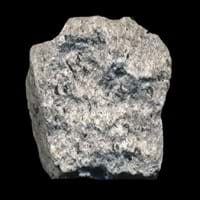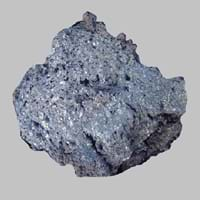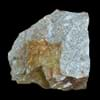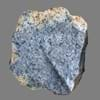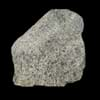Definition
Porphyry is a reddish-brown to purple igneous rock containing large phenocrysts of various minerals embedded in a fine-grained matrix
Picrite is a variety of high-magnesium olivine basalt that is very rich in the mineral olivine
Origin
Egypt
Hawaii Islands
Discoverer
Unknown
Unknown
Etymology
From Old French porfire, from Italian porfiro and in some cases directly from Latin porphyrites
From Greek pikros bitter + -ite, 19th century
Class
Igneous Rocks
Igneous Rocks
Sub-Class
Durable Rock, Hard Rock
Durable Rock, Hard Rock
Other Categories
Fine Grained Rock, Opaque Rock
Fine Grained Rock, Opaque Rock
Texture
Porphyritic
Earthy, Rough
Color
Black, Brown, Colourless, Green, Grey, Red, Rust, White
Black, Brown, Colourless, Green, Grey, Pink, White, Yellow
Durability
Durable
Durable
Scratch Resistant
Yes
Yes
Appearance
Dull
Rough and Shiny
Interior Uses
Decorative Aggregates, Interior Decoration
Countertops, Decorative Aggregates, Homes, Interior Decoration
Exterior Uses
Garden Decoration, Paving Stone
As Building Stone, As Facing Stone, Garden Decoration, Paving Stone
Other Architectural Uses
Curbing
Curbing
Construction Industry
Construction Aggregate
As a Sintering Agent in Steel Industry to process Iron Ore, Cement Manufacture, for Road Aggregate, Manufacture of Magnesium and Dolomite Refractories, Roadstone, Used for flooring, stair treads, borders and window sills.
Medical Industry
Not Yet Used
Not Yet Used
Antiquity Uses
Artifacts, Monuments, Sculpture
Artifacts, Monuments, Sculpture
Commercial Uses
Creating Artwork, Gemstone, Jewelry
As a Feed Additive for Livestock, As armour rock for sea walls, Metallurgical Flux, Pottery, Source of Magnesia (MgO)
Types
Rhomb Porphyry
Oceanite
Features
Generally rough to touch, Is one of the oldest rock, Surfaces are often shiny
Host Rock for Lead
Archaeological Significance
Famous Monuments
Data Not Available
Data Not Available
Famous Sculptures
Data Not Available
Data Not Available
Pictographs
Not Used
Not Used
Petroglyphs
Not Used
Not Used
Formation
Porphyry is formed in two stages: the magma cools slowly deep within the crust or the magma is cools rapidly as it erupts from a volcano, creating small grains that are usually invisible to naked eye.
Picrite is a fine-grained, hard rock which is a type of metasomatite, essentially altered basalt. It forms with or without crystallization, either below the surface as intrusive rocks or on the surface as extrusive rocks.
Mineral Content
Biotite, Chert, Feldspar, Garnet, Graphite, Quartz, Silica
Biotite, Olivine, Plagioclase, Pyrrhotite
Compound Content
Aluminium Oxide, CaO, Iron(III) Oxide, Potassium Oxide, MgO, Sodium Oxide, Silicon Dioxide, Titanium Dioxide
Al, CaO, Carbon Dioxide, Mg, MgO
Types of Metamorphism
Burial Metamorphism, Cataclastic Metamorphism, Contact Metamorphism, Hydrothermal Metamorphism, Impact Metamorphism, Regional Metamorphism
Burial Metamorphism, Cataclastic Metamorphism, Impact Metamorphism, Regional Metamorphism
Types of Weathering
Biological Weathering, Chemical Weathering, Not Registered
Biological Weathering
Types of Erosion
Chemical Erosion, Coastal Erosion, Glacier Erosion
Chemical Erosion, Coastal Erosion, Glacier Erosion, Sea Erosion, Water Erosion, Wind Erosion
Grain Size
Fine Grained
Fine Grained
Fracture
Irregular
Uneven
Streak
White
White, Greenish White or Grey
Porosity
Less Porous
Less Porous
Luster
Dull
Subvitreous to Dull
Compressive Strength
Not Available
Cleavage
Imperfect
Imperfect
Specific Gravity
2.5-4
2.75-2.92
Transparency
Translucent to Opaque
Opaque
Density
2.5-2.52 g/cm3
1.5-2.5 g/cm3
Specific Heat Capacity
Not Available
Resistance
Heat Resistant, Impact Resistant
Heat Resistant
Deposits in Eastern Continents
Asia
China, Kazakhstan, South Korea, Thailand, Turkey, Vietnam
India, Russia
Africa
Egypt, Ethiopia, Ghana, South Africa
South Africa
Europe
Finland, France, Germany, Great Britain, Hungary, Iceland, Ireland, Italy, Netherlands, Norway, Romania, Sweden, Switzerland
Iceland
Others
Greenland
Not Yet Found
Deposits in Western Continents
North America
Canada, Cuba, Jamaica, USA
Canada, USA
South America
Bolivia, Brazil, Colombia, Ecuador, Paraguay
Brazil
Deposits in Oceania Continent
Australia
New South Wales, New Zealand, Western Australia
Not Yet Found
All about Porphyry and Picrite Properties
Know all about Porphyry and Picrite properties here. All properties of rocks are important as they define the type of rock and its application. Porphyry and Picrite belong to Igneous Rocks.Texture of Porphyry is Porphyritic whereas that of Picrite is Earthy, Rough. Porphyry appears Dull and Picrite appears Rough and Shiny. The luster of Porphyry is dull while that of Picrite is subvitreous to dull. Porphyry is available in black, brown, colourless, green, grey, red, rust, white colors whereas Picrite is available in black, brown, colourless, green, grey, pink, white, yellow colors. The commercial uses of Porphyry are creating artwork, gemstone, jewelry and that of Picrite are as a feed additive for livestock, as armour rock for sea walls, metallurgical flux, pottery, source of magnesia (mgo).
